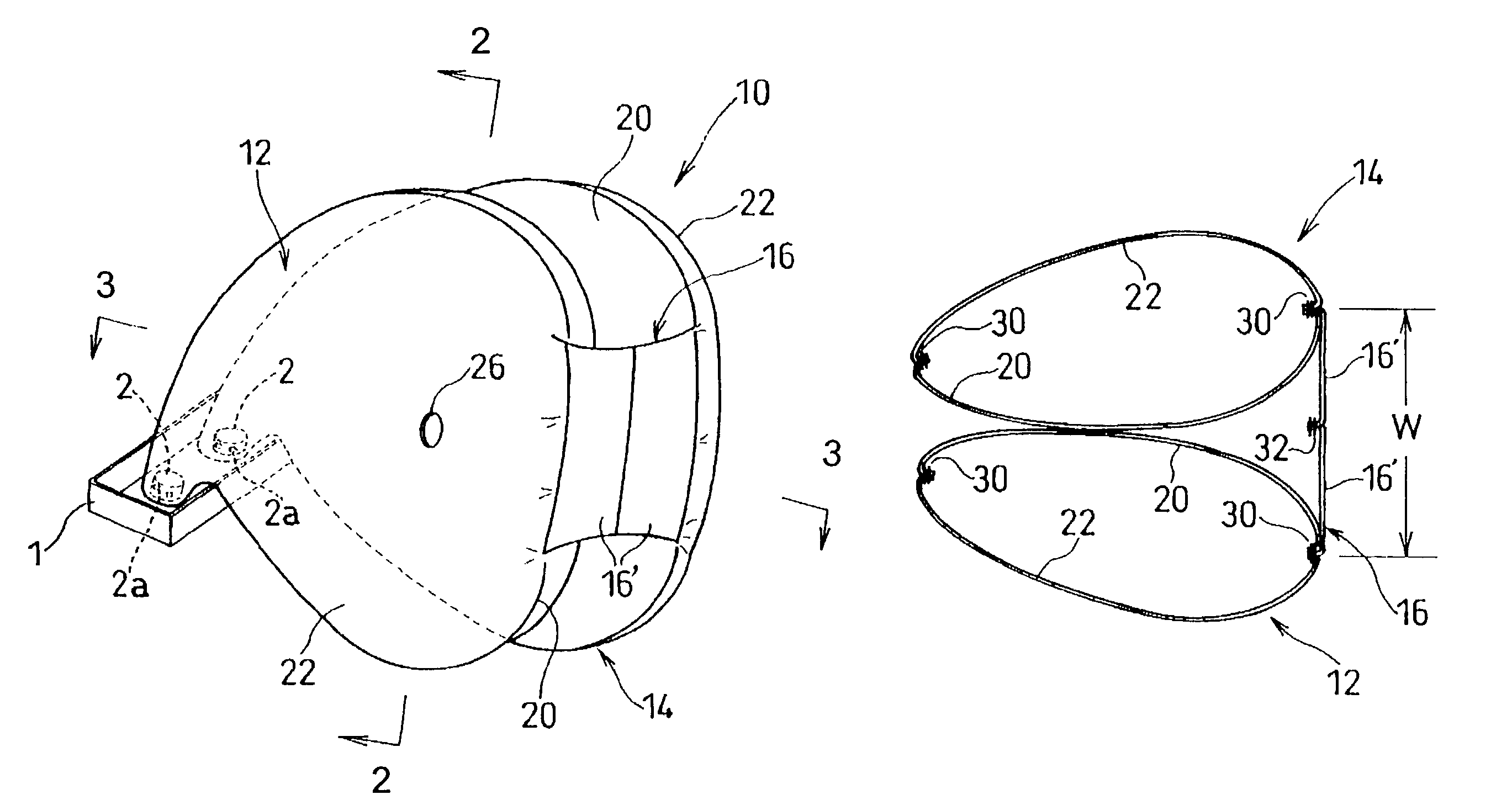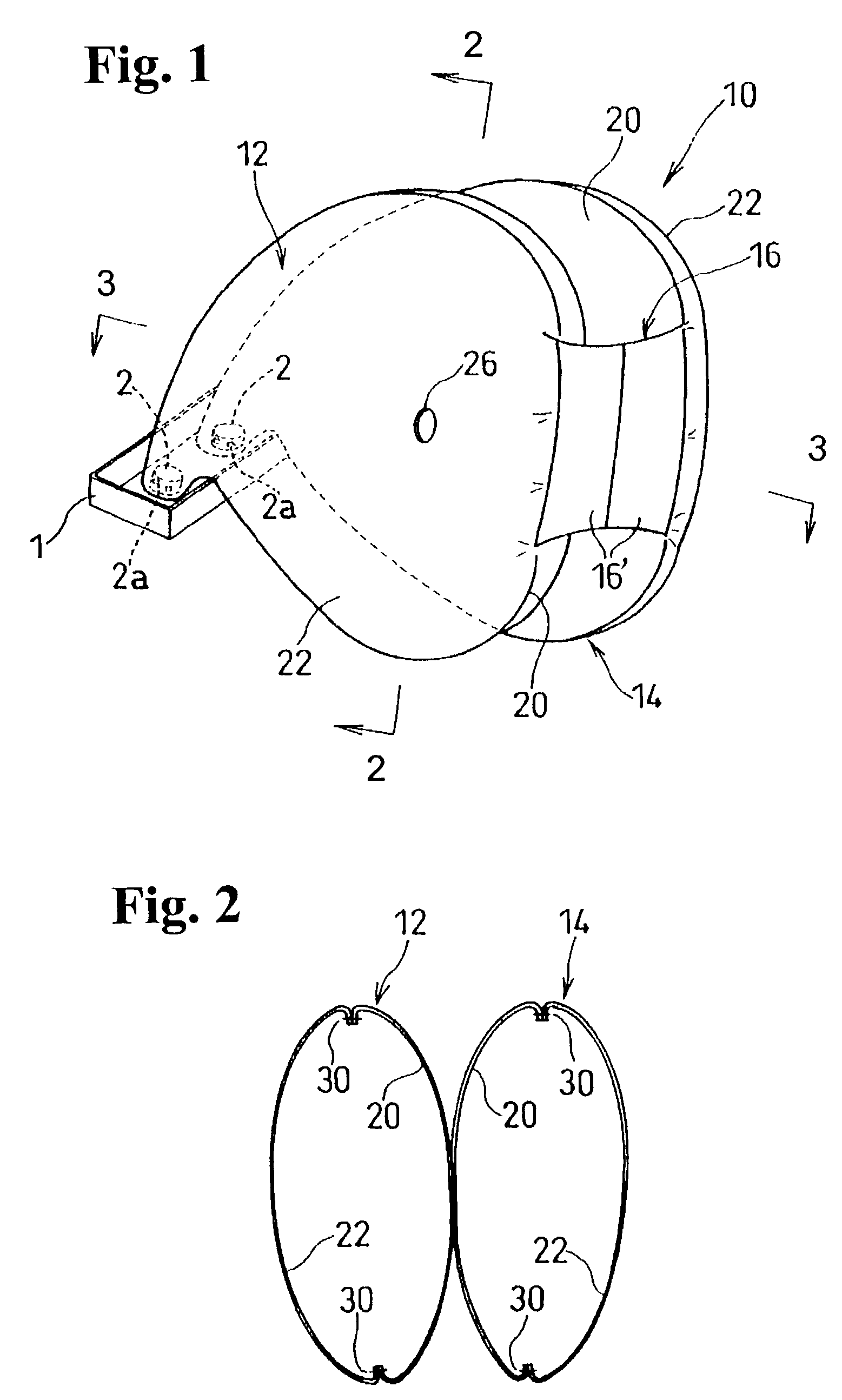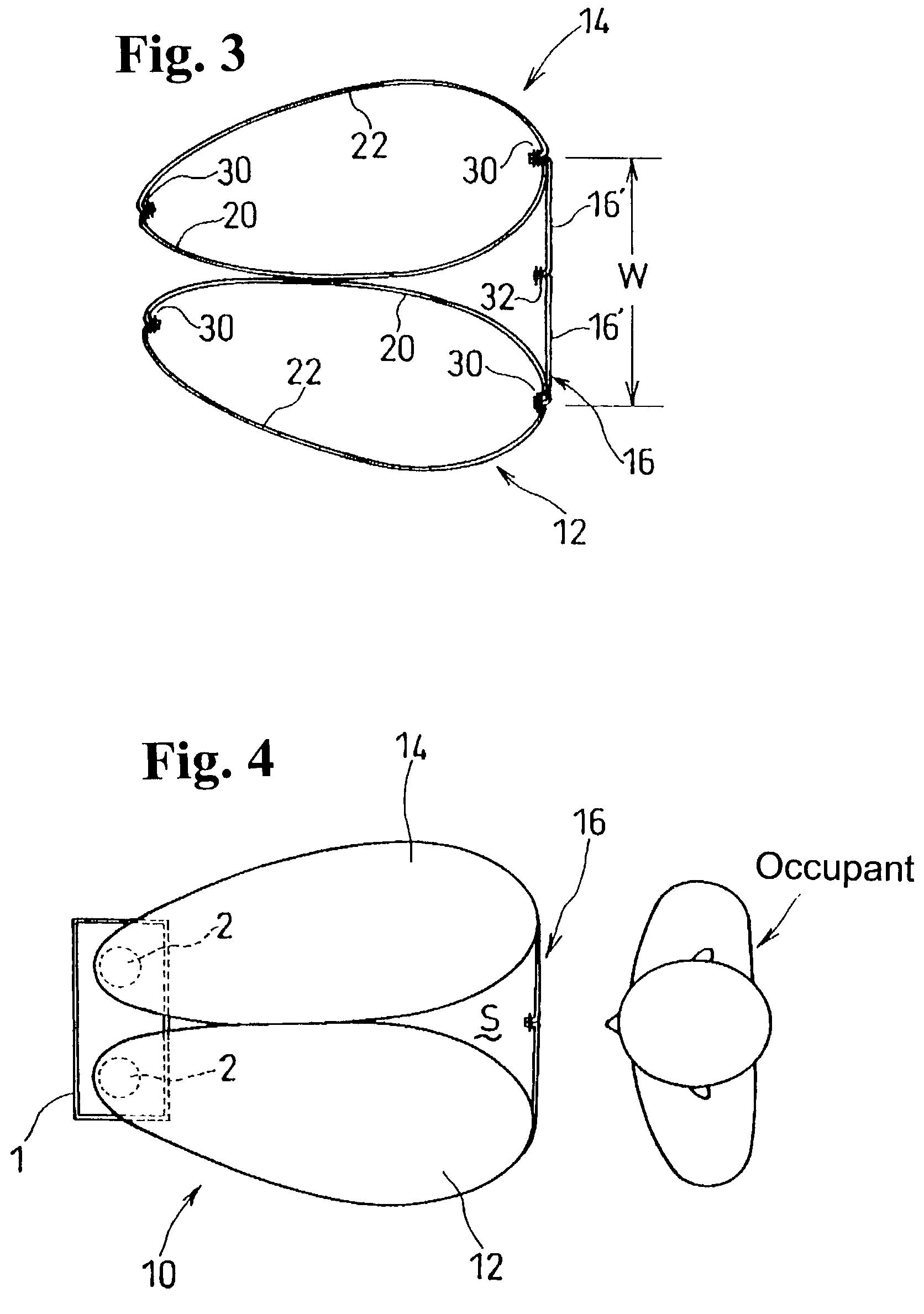Airbag with tie panel
- Summary
- Abstract
- Description
- Claims
- Application Information
AI Technical Summary
Benefits of technology
Problems solved by technology
Method used
Image
Examples
Embodiment Construction
[0044]Hereunder, preferred embodiments of the present invention will be described in detail with reference to the accompanying drawings.
[0045]FIG. 1 is a perspective view showing an airbag according to an embodiment of the present invention in a state that the airbag is expanded. FIGS. 2 and 3 are sectional views taken along lines 2-2 and 3-3 in FIG. 1, respectively. FIGS. 4 and 5 are plan and side views of the airbag in a state where an adult occupant having an average size faces the airbag. FIGS. 6 to 11 are views for explaining a manufacturing process of the airbag according to the embodiment of the present invention. FIG. 12 is a perspective view showing an airbag apparatus having the airbag around a passenger seat in a vehicle in a state where the occupant faces the airbag. In the following description, left and right directions indicate the left and right directions of the occupant.
[0046]An airbag 10 comprises a left half airbag 12 to be inflated toward a front left side of th...
PUM
 Login to View More
Login to View More Abstract
Description
Claims
Application Information
 Login to View More
Login to View More - R&D
- Intellectual Property
- Life Sciences
- Materials
- Tech Scout
- Unparalleled Data Quality
- Higher Quality Content
- 60% Fewer Hallucinations
Browse by: Latest US Patents, China's latest patents, Technical Efficacy Thesaurus, Application Domain, Technology Topic, Popular Technical Reports.
© 2025 PatSnap. All rights reserved.Legal|Privacy policy|Modern Slavery Act Transparency Statement|Sitemap|About US| Contact US: help@patsnap.com



